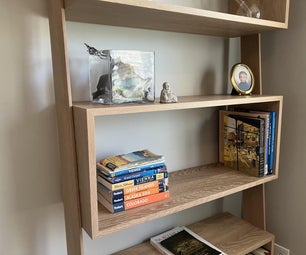Introduction: Foreclosure Bowl
Pushed by unfolding events, a crop of "For Sale" signs has been popping up all over the country this summer; selling houses, boats, cars, motorcycles, RVs, and many other things. A lot of these signs are made from thin sheet steel or aluminum. One might inquire on Craigslist about possible used signs, or perhaps harvest directly from the sale or purchase of something. At the end of the last step, there are some other bowls I have made with this method, out of license plates and a stop sign. Pretty much any thin sheet metal will work.
The idea is to stress the metal up into a bowl shape without having to use any welding or complicated tools. By making a few slits here and holes there, you can bend, fold, and pin the metal together pretty quickly with some tin snips and a drill.
Assuming the sign is free, only a couple bucks' worth of fasteners are needed. Tin snips or a Dremel, pliers, a drill, a wrench, a screwdriver, and a ratchet would be handy to have close. Only takes an hour or two; most of the time is actually laying out the cuts more so than the actual construction.
It uses the same basic principles of this chair on a smaller scale: https://www.instructables.com/id/Nine_Square_Chair/
For sale here: http://www.etsy.com/view_listing.php?listing_id=28562050
The idea is to stress the metal up into a bowl shape without having to use any welding or complicated tools. By making a few slits here and holes there, you can bend, fold, and pin the metal together pretty quickly with some tin snips and a drill.
Assuming the sign is free, only a couple bucks' worth of fasteners are needed. Tin snips or a Dremel, pliers, a drill, a wrench, a screwdriver, and a ratchet would be handy to have close. Only takes an hour or two; most of the time is actually laying out the cuts more so than the actual construction.
It uses the same basic principles of this chair on a smaller scale: https://www.instructables.com/id/Nine_Square_Chair/
For sale here: http://www.etsy.com/view_listing.php?listing_id=28562050
Step 1: Drills/Cuts
All dimensions are approximate; tweak to fit the size of sign that you have. Refer to lines on sign in pictures to guide your rough geometry.
Decide how big you want the bowl to be -- the walls on this one are about 3" wide. Measure 3" in from each side and run lines to create a smaller rectangle offset inside the original perimeter.
Then measure 2" down from each corner in each direction. Connect these lines so each corner is "clipped." Measure the midpoint of the cut line. Connect that midpoint to the corner of your small rectangle. This is the center cut line to create the triangular fins at each corner that turn the sign from flat to bowl-shaped.
Clip off corners. Drill a hole at each corner of the inside rectangle. The corner holes on this bowl were 5/8"; choose whatever bolts you have handy for the bowl's "feet" and drill accordingly.
Then, bisect each triangular "tab" you have now created, measure an inch or so down, and drill hole 3/16" or so on each side. Refer to photographs for placement.
Cut down the centerline of your "tabs" into each corner hole.
Decide how big you want the bowl to be -- the walls on this one are about 3" wide. Measure 3" in from each side and run lines to create a smaller rectangle offset inside the original perimeter.
Then measure 2" down from each corner in each direction. Connect these lines so each corner is "clipped." Measure the midpoint of the cut line. Connect that midpoint to the corner of your small rectangle. This is the center cut line to create the triangular fins at each corner that turn the sign from flat to bowl-shaped.
Clip off corners. Drill a hole at each corner of the inside rectangle. The corner holes on this bowl were 5/8"; choose whatever bolts you have handy for the bowl's "feet" and drill accordingly.
Then, bisect each triangular "tab" you have now created, measure an inch or so down, and drill hole 3/16" or so on each side. Refer to photographs for placement.
Cut down the centerline of your "tabs" into each corner hole.
Step 2: Bendin'
Clamp the metal down, aligning the long line of the inside rectangle with the edge of the table. Bend side down a little. Repeat on other long side of inside rectangle.
Flip; placing a block along one of the short sides of the inside rectangle, bend side up. Repeat for other short side of inside rectangle.
Using channel locks or long needle-nose pliers, bend each triangular corner tab towards the center of the bowl.
The last photo in this step shows the corner tab geometry the clearest; dimensions aren't so important as the general geometric layout of two scalene triangles that are mirror images of one another, with a hole drilled in the rough center of each one.
Flip; placing a block along one of the short sides of the inside rectangle, bend side up. Repeat for other short side of inside rectangle.
Using channel locks or long needle-nose pliers, bend each triangular corner tab towards the center of the bowl.
The last photo in this step shows the corner tab geometry the clearest; dimensions aren't so important as the general geometric layout of two scalene triangles that are mirror images of one another, with a hole drilled in the rough center of each one.
Step 3: Boltin'
The bends in this bowl are pinned in place with #10 x 3/8" zinc-plated round head slot-screw machine bolts. 3/8" is about the shortest you're probably going to find, even though it is a little long for our purposes. Get some matching nuts and washers.
This step can require a good bit of hand strength. Grab two adjoining tabs and force one over the other, pulling them together so that the planes of each tab are parallel and the holes align. One hole might be higher or lower than the other; just drill out your holes a little bigger if need be. Force a bolt with a washer through the hole. Tighten the nut with a screwdriver and a ratchet or wrench until tabs are tight to one another. Repeat on all four corners.
Now you have the bowl; to cover up the holes in the corners, drill them out again to the diameter of your bolt. The corner holes are necessary for the bends to work, as they provide a negative space as "relief" for the stress of forcing the metal to do something it doesn't want to do. Use two washers and two nuts to secure each corner bolt, leaving the head down to serve as a "foot."
Glue a little neoprene washer or felt pad on the bolt head. While its flipped over, use a rubber mallet or just your hands to bend the bolts so that they all sprout from the bottom of the bowl at a roughly similar angle. If the bowl still doesn't sit flat, you can usually flex the whole bowl some to get the right level of adjustment.
This step can require a good bit of hand strength. Grab two adjoining tabs and force one over the other, pulling them together so that the planes of each tab are parallel and the holes align. One hole might be higher or lower than the other; just drill out your holes a little bigger if need be. Force a bolt with a washer through the hole. Tighten the nut with a screwdriver and a ratchet or wrench until tabs are tight to one another. Repeat on all four corners.
Now you have the bowl; to cover up the holes in the corners, drill them out again to the diameter of your bolt. The corner holes are necessary for the bends to work, as they provide a negative space as "relief" for the stress of forcing the metal to do something it doesn't want to do. Use two washers and two nuts to secure each corner bolt, leaving the head down to serve as a "foot."
Glue a little neoprene washer or felt pad on the bolt head. While its flipped over, use a rubber mallet or just your hands to bend the bolts so that they all sprout from the bottom of the bowl at a roughly similar angle. If the bowl still doesn't sit flat, you can usually flex the whole bowl some to get the right level of adjustment.











